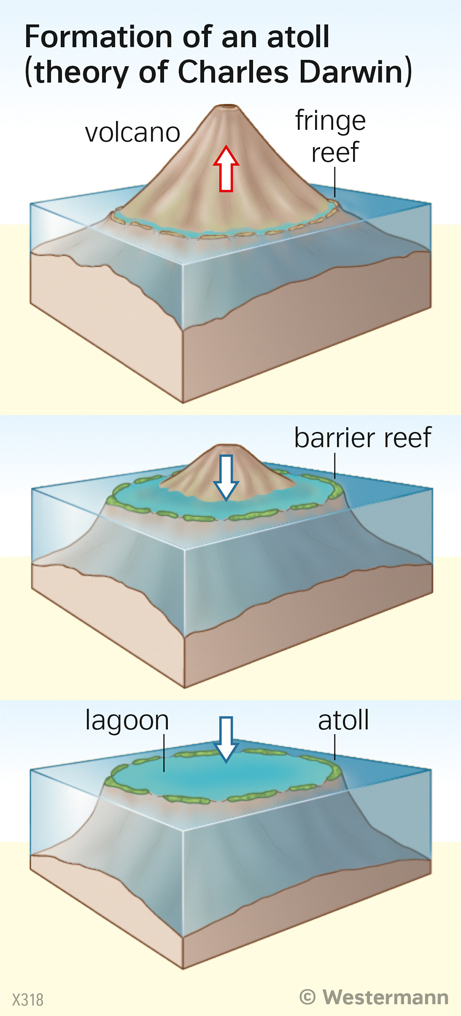Formation of an atoll (theory of Charles Darwin)
Atmosphere and climate change
978-3-14-100890-6 | Page 21 | Ill. 6

Overview
The Maloelap Atoll lies north of the equator in the Tropical Zone. The prevailing wind direction is northeast due to the trade wind circulation.
Atolls are ring-shaped or oval coral reefs with islands rising above sea level and a lagoon in the middle. Stony corals and calcareous algae form the reef community. Certain ecological conditions are necessary for coral reefs to thrive: the seawater must have a minimum temperature of 20°C and a salinity of around 3.5 per cent, and it should also be oxygen-rich, strongly agitated and sufficiently exposed to light. Corals can be found up to a water depth of 25 metres.
Theory of atoll formation
The formation of atolls is explained by a theory of Charles Darwin. During the slow sinking of a volcanic island, first a fringing reef, then a barrier reef forms. The reefs consist of the skeletons of dead corals. Reef growth of 1 to 25 millimetres per year keeps pace with the subsidence so that the reef surface always remains close to the sea surface. When the volcanic island finally submerges completely, a lagoon takes its place. It has several passages to the open sea on the lee side, through which water that has entered the lagoon can drain away again. They serve as an entrance for ships into the protective lagoon.




